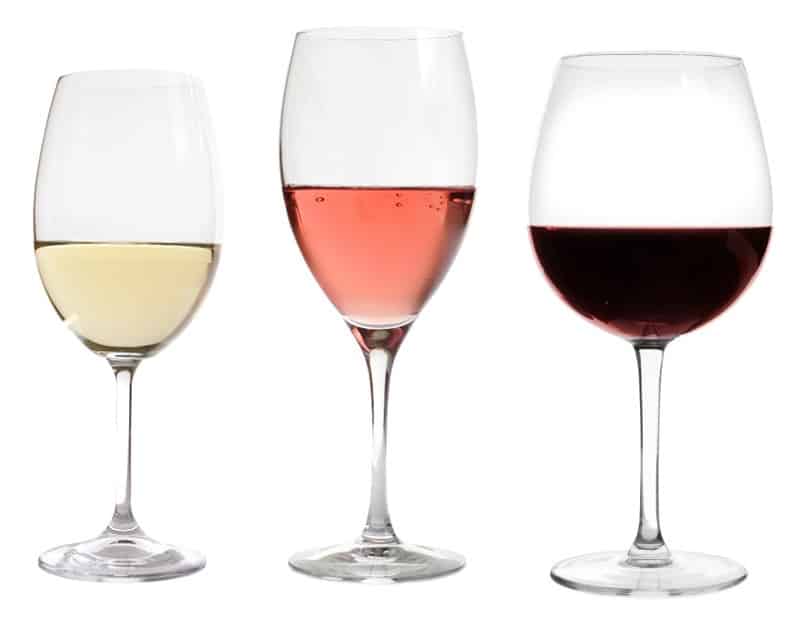Residential Wine Cellars – An intro, Red, White & Rose Wines
Contents

R. White Wine, M. Rose Wine, L. Red Wine From Commercial Wine Cellars
When considering building or stocking up your own home residential wine cellar it’s important to understand the basics about the different types of wine you might want to collect.
Out of the many wine varieties out there, the main 3 are red, white, and Rose. They’re made similarly, but there are a few key differences between them. Red wine is made from red grapes that are harvested, taken to a press, and separated from their skins. The juice is pressed out of both the grapes and their skins. The more skin extract used, the more bitter and acidic the flavor.
This is because red grapes are full of tannins. When aged for a long enough amount of time, tannins gradually begin to soften and the wine takes on a gentler flavor in its maturity. That’s why red wines are good for long-term aging, their quality is actually heightened over time.
White wines, on the other hand, are best enjoyed young. Much sweeter and less acidic than their red counterparts, the charm of white wine is its fresh, tangy flavor. Dubbed the summer wine, white wines are especially refreshing on a warm day, and almost always chilled.
Rose wine is white or red grape wine that is made primarily from the juice. It is tinged pink by brief contact with the skins, which also mildly affects its flavor. You could say it was a combination of both red and white wine, though closer to a white. Depending on the Rose wine, it could be better immediately or aged.
Wine Cellar Refrigeration Units Instead of Normal Refrigerators
Whatever the wine, you can be sure that proper storage will be a necessity. You may be one to keep wines in a fridge, which is fine if you aren’t too picky about your wine. However, if you have a more refined taste, you might want to know that wine stored in the fridge deteriorates in taste. This is because food refrigerators do not maintain the right temperature for aging wine over long periods: 50-59 degrees Fahrenheit.
Even if you were to set a fridge to that temperature though, refrigerators are opened so often that fluctuations would be unavoidable, one of the greatest enemies of wine. Not only that, but refrigerators don’t generally have humidity controls, and wines need a relatively high humidity level of 75%. Even if the humidity were attainable, the other food in the refrigerator would likely mold.
That brings up another problem… wine tends to take on the scents of other foods in the fridge, which would obviously cause the wine to taste a bit funky. Despite all of the cons to storing wine in your fridge, if you store it in the fridge temporarily, say, just before dinner, you should be alright. It really becomes a problem however if you’re a frequent wine-drinker, like to keep a good inventory of wine and store it over an extended period.
If that’s the case, you will want the equivalent of a mini wine cellar, a wine cabinet, or a full custom wine cellar with a dedicated wine cellar refrigeration unit.
With separate compartments on the inside, specially designed wine cabinets with integral wine cooling systems can allow different wines to be stored at different but very specific temperatures. This is especially important to serious wine collectors; as wines kept at their own unique ideal temperatures, can be better maintained, aged, or even improved in quality over time.
Wine Cellars for Wine Collectors
The term ‘Wine Cellar Refrigeration Units’ is sometimes used to refer to a wine fridge, wine cabinet or the system used to control the climate of a whole room dedicated to storing wine, namely a residential custom wine cellar.
If you collect many wines, a full residential wine cellar may be the ideal choice for you. Just about any room in the home can be converted into a wine cellar. The most common places are unused basement rooms or locations close to a kitchen. In environments that are not too harsh, under-utilized garage spaces are also popular.
Basements are often good choices because they already meet two of the ideal wine environment requirements, they are dark, cool, and relatively stable in temperature. Certainly, they are usually exposed to less light and heat than the upper levels of the house. Kitchen wine cellars, on the other hand, offer more convenience, as well as provide the opportunity to display your prized wine collection.
If you are big on display, you could gain some ideas and learn how to make an attractive wine room display by checking out some of these completed projects.
Pacific Palisades California Wine Cellar
Commercial Wine Cellars Los Angeles California
Commercial Wine Racks Santa Barbara California
In the example wine cellars above installed in homes, restaurants, or companies, you will notice a great deal of emphasis on aesthetic appeal.
Once you’ve designed and created your own personal residential wine cellar, enjoy stocking it with your favorite wines. There are excellent varieties of all wines, be they Rose, white or red.




